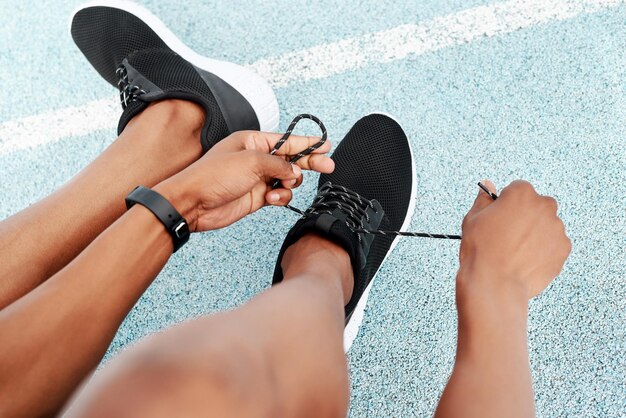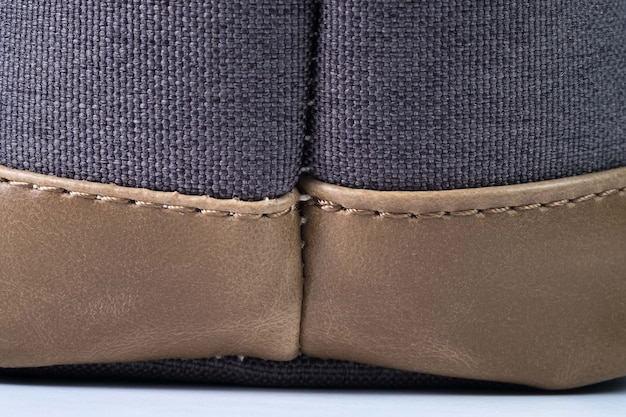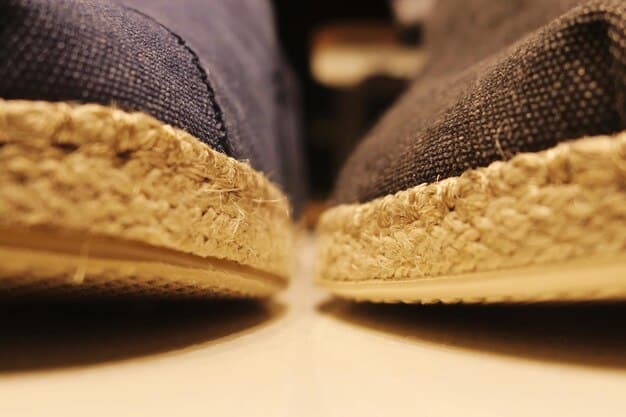Spotting Fake Nikes: A German Buyer’s Guide to Authenticity

Advertisements
How to spot fake Nike sneakers involves examining details like the logo, stitching, materials, and packaging, ensuring German buyers can avoid counterfeit products and purchase authentic footwear.
For German sneaker enthusiasts, owning a pair of authentic Nikes is often a matter of pride and quality. However, the market is flooded with counterfeit products, making it crucial to know how to spot fake Nike sneakers. This guide provides a comprehensive checklist to help German buyers ensure they’re getting the real deal.
Advertisements
The Alluring Appeal of Nike Sneakers in Germany
Nike sneakers have a strong presence in the German market, known for their athletic performance and trendy designs. The brand’s association with sports icons and its innovative technology make it a favorite among athletes and fashion-conscious individuals alike.
The popularity of Nike sneakers also makes them a prime target for counterfeiters. To protect yourself from scams, it’s important to be well-informed about how to identify genuine Nike products.
Advertisements

Why Fake Nikes Are a Problem
Purchasing counterfeit goods can come with several negative consequences. Here’s why you should avoid fake Nike sneakers:
- Poor Quality: Fake sneakers are made with substandard materials that often fall apart quickly.
- Lack of Support: Authentic Nike sneakers provide proper support and cushioning for athletic activities, while fakes may cause discomfort and injuries.
- Ethical Concerns: The production of counterfeit goods can involve unethical labor practices and support criminal organizations.
Avoiding fake Nike sneakers ensures that you are getting a high-quality product that aligns with ethical standards.
Examining the Nike Logo: A Key Indicator
The Nike logo, or Swoosh, is one of the most recognizable symbols in the world, and it holds the key to spotting inauthentic merchandise. Counterfeiters often struggle to replicate the Swoosh precisely.
Therefore, inspecting the Swoosh for imperfections can quickly reveal whether a pair of Nikes is genuine or fake.
Swoosh Shape and Placement
Examine the shape and placement of the Swoosh on the sneaker:
- Authentic: The Swoosh should be clean, crisp, and precisely positioned.
- Fake: The Swoosh might be distorted, uneven, or poorly aligned.
Also, check the stitching around the Swoosh. Authentic Nike sneakers will have neat, consistent stitching, whereas fakes often show uneven or frayed threads.
Color Consistency
Another telling aspect is the color consistency of the Swoosh:
- Authentic: Look for consistent and vibrant coloring.
- Fake: Be wary of faded, unevenly applied, or mismatched colors.
Inconsistencies in color can be a clear sign of a counterfeit product. Always compare the color to official Nike images if possible.
Spotting discrepancies in the logo is a critical method to ensure you purchase authentic Nike sneakers and avoid low-quality counterfeits.
Evaluating the Materials and Construction
Genuine Nike sneakers are crafted from high-quality materials that contribute to their durability and comfort. Examining the materials and construction can help you discern real Nikes from fakes.
Pay close attention to fabric, leather, and rubber components to identify any signs of substandard quality.
Assessing the Fabric Quality
Nike uses various types of textiles in their sneakers. Here’s what to look for:
- Authentic: High-quality fabrics that are durable and feel premium.
- Fake: Cheap, thin, or rough fabrics that may tear easily.
Authentic Nike sneakers will often have innovative features, such as breathable mesh or water-resistant coatings. Counterfeit products usually lack these advanced materials.
Leather Detailing
For sneakers with leather components, inspect the quality and finish. Authentic Nikes use high-grade leather that is smooth and supple, while fakes often use synthetic or low-grade leather that feels stiff or plastic-like.
Leather detailing on fake sneakers is often poorly executed, resulting in visible imperfections.

Rubber Soles
The rubber sole is another area to examine. Authentic Nike soles are made from durable rubber compounds that provide excellent traction and cushioning. Fake soles are often made from cheap plastic or low-quality rubber that wears out quickly. Press firmly on the sole to test the responsiveness.
By evaluating the quality of materials and construction, you can quickly determine the authenticity of Nike sneakers and avoid purchasing inferior fakes.
Decoding the Packaging and Labels
The packaging and labels provide important clues to authenticate Nike sneakers. Genuine products are typically shipped in high-quality packaging with accurate labels.
Paying attention to the details on the box and the internal labels can help you identify counterfeit sneakers easily.
Checking the Box
Inspect the box for the following attributes:
- Authentic: High-quality cardboard, clear printing, and accurate product information.
- Fake: Flimsy cardboard, blurry printing, and incorrect or missing information.
Verify that the shoe box label matches the shoe model, size, and color. The label should include the manufacturing date and country of origin.
Inspecting Interior Labels
The interior labels inside the shoes provide additional information:
- Authentic: Clearly printed size and style codes that match the box.
- Fake: Incorrect, blurry, or missing labels.
Check for misspellings or grammatical errors on the labels, which are common indicators of fake sneakers.
Careful attention to packaging and labels is an effective method for identifying fake Nike sneakers and guaranteeing your purchase.
Verifying the Serial and Style Codes
Every pair of authentic Nike sneakers comes with unique serial and style codes. These codes can be verified to ensure the shoes are legitimate.
Understanding how to locate and check these codes is a vital step in authenticating your purchase.
Finding the Codes
Locate the serial and style codes on the sneaker label inside the shoe. The style code is usually a nine-digit number, while the serial code is a combination of letters and numbers.
Ensure that the codes on the box match the codes inside the shoe.
Verifying the Codes
Cross-reference the style code on the Nike website or other reputable sneaker databases. If the code doesn’t match a legitimate Nike product, it’s a red flag.
You can also contact Nike customer service to verify the codes if you have any doubts.
Verifying the serial and style codes adds an additional layer of assurance that your Nike sneakers are authentic and not counterfeit.
Understanding Price Discrepancies
Price can be a significant indicator of whether a pair of Nike sneakers is genuine. Unrealistically low prices often suggest that the product is counterfeit.
Being aware of market prices and typical discounts can protect you from falling for scams.
Researching Market Prices
Before making a purchase, research the average retail price for the specific Nike sneaker model you are interested in. Check reputable retailers and official Nike stores to get an accurate price range.
- Authentic: Expect to pay within the standard market price range, even with discounts.
- Fake: Be wary of prices that are significantly lower than the average retail price.
Beware of Deep Discounts
While sales and discounts are common, extremely deep discounts may indicate fraudulent activity.
- Authentic: Reputable retailers may offer reasonable discounts, but they are unlikely to sell sneakers for significantly less than cost.
- Fake: Scammers often lure customers with unbelievably low prices to sell counterfeit products.
Understanding price discrepancies can help you avoid scams and ensure that you are purchasing genuine Nike sneakers at a fair price.
Purchasing from Authorized Dealers
The best way to ensure you are buying authentic Nike sneakers is to purchase from authorized dealers. These retailers have been vetted by Nike and are guaranteed to sell genuine products.
Prioritizing authorized dealers over unverified sources significantly reduces the risk of purchasing counterfeit sneakers.
Identifying Authorized Retailers
Authorized Nike retailers include official Nike stores, major sporting goods chains, and reputable online retailers. Look for the Nike logo and official partnerships on the retailer’s website or in their physical store.
Buying from these sources ensures that you are getting authentic merchandise backed by Nike’s quality guarantee.
Avoiding Unverified Sources
Be cautious when purchasing from unverified sources, such as online marketplaces or individual sellers with limited feedback. These sources are more likely to sell counterfeit products.
If you are considering buying from an unfamiliar source, do your research and read reviews to assess their credibility.
Purchasing from authorized dealers is the most reliable way to guarantee that your Nike sneakers are authentic and of high quality.
| Key Point 🔑 | Brief Description |
|---|---|
| 🔎 Logo Inspection | Examine the Swoosh for shape, placement, and color consistency. |
| 🧵 Material Quality | Check fabric, leather, and rubber for high-grade materials and construction. |
| 📦 Packaging & Labels | Verify the box authenticity and check interior labels for accuracy. |
| 🏷️ Verify Codes | Cross-reference serial and style codes on official Nike sources. |
FAQ Section
▼
Buying authentic Nikes ensures you receive high-quality materials, proper support for athletic activities, and ethical production practices, while avoiding inferior and unethical products.
▼
Real Nike logos are crisp and precisely placed, with consistent coloring and neat stitching. Fake logos often have distortions, uneven colors, and messy stitching.
▼
Locate the codes inside the shoe and cross-reference them on the Nike website or other reputable sneaker databases, or contact Nike customer service for verification.
▼
Yes, price can be an indicator. Be wary of prices that are significantly lower than the average retail price, as deeply discounted offers are often associated with counterfeit products.
▼
The safest place to buy authentic Nikes is from authorized dealers, including official Nike stores, major sporting goods chains, and reputable online retailers with official partnerships.
Conclusion
By following this comprehensive guide, German buyers can confidently navigate the sneaker market and ensure they’re purchasing authentic Nike sneakers. Always pay close attention to the key indicators, such as logo details, material quality, packaging, serial codes, and price discrepancies. Your due diligence will ensure you receive the quality and satisfaction that come with owning genuine Nike footwear.